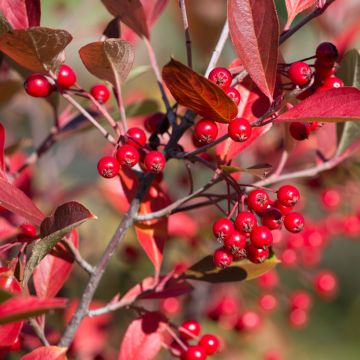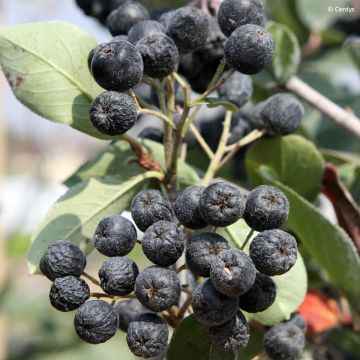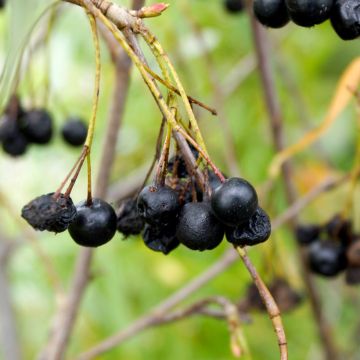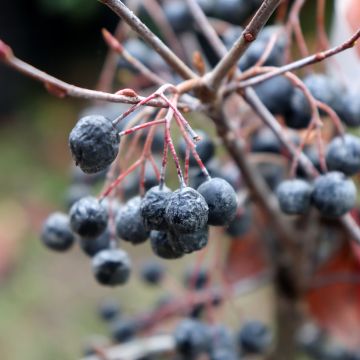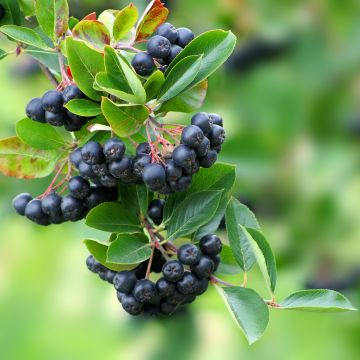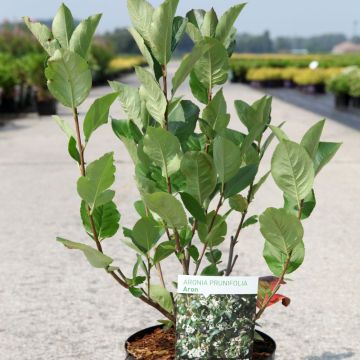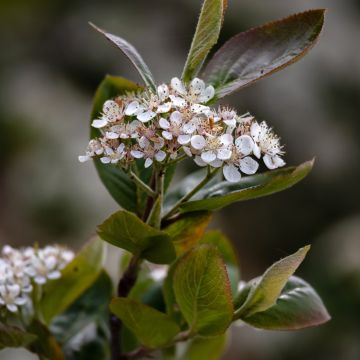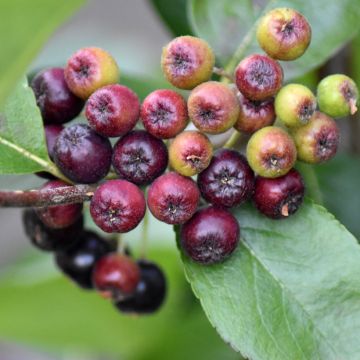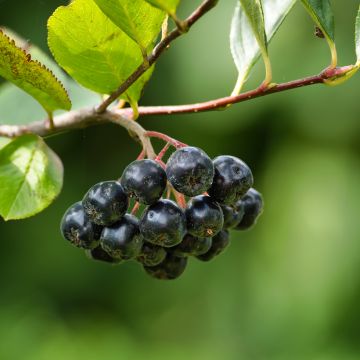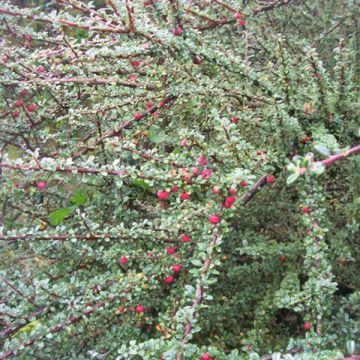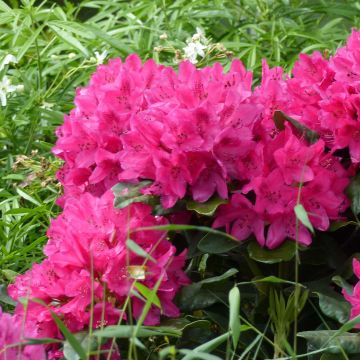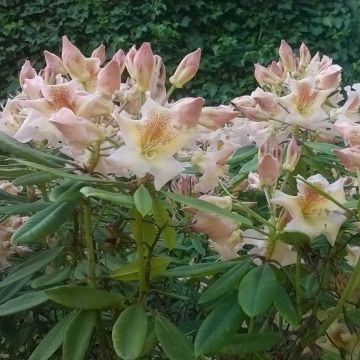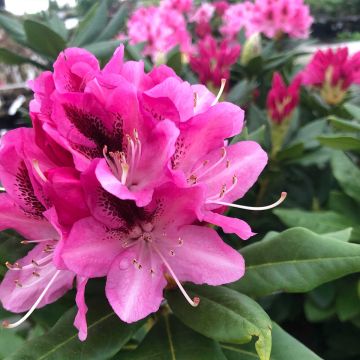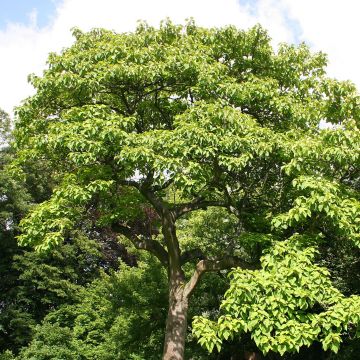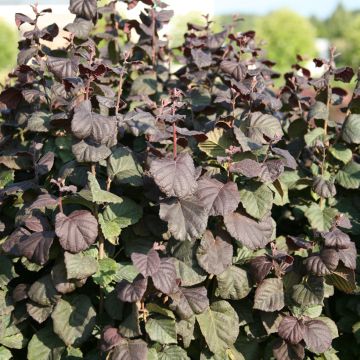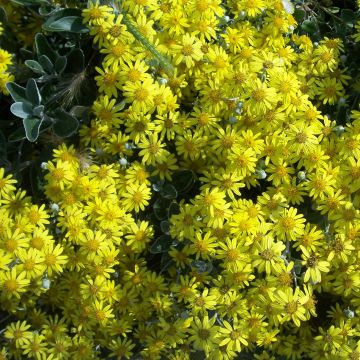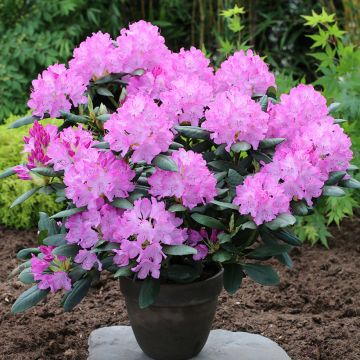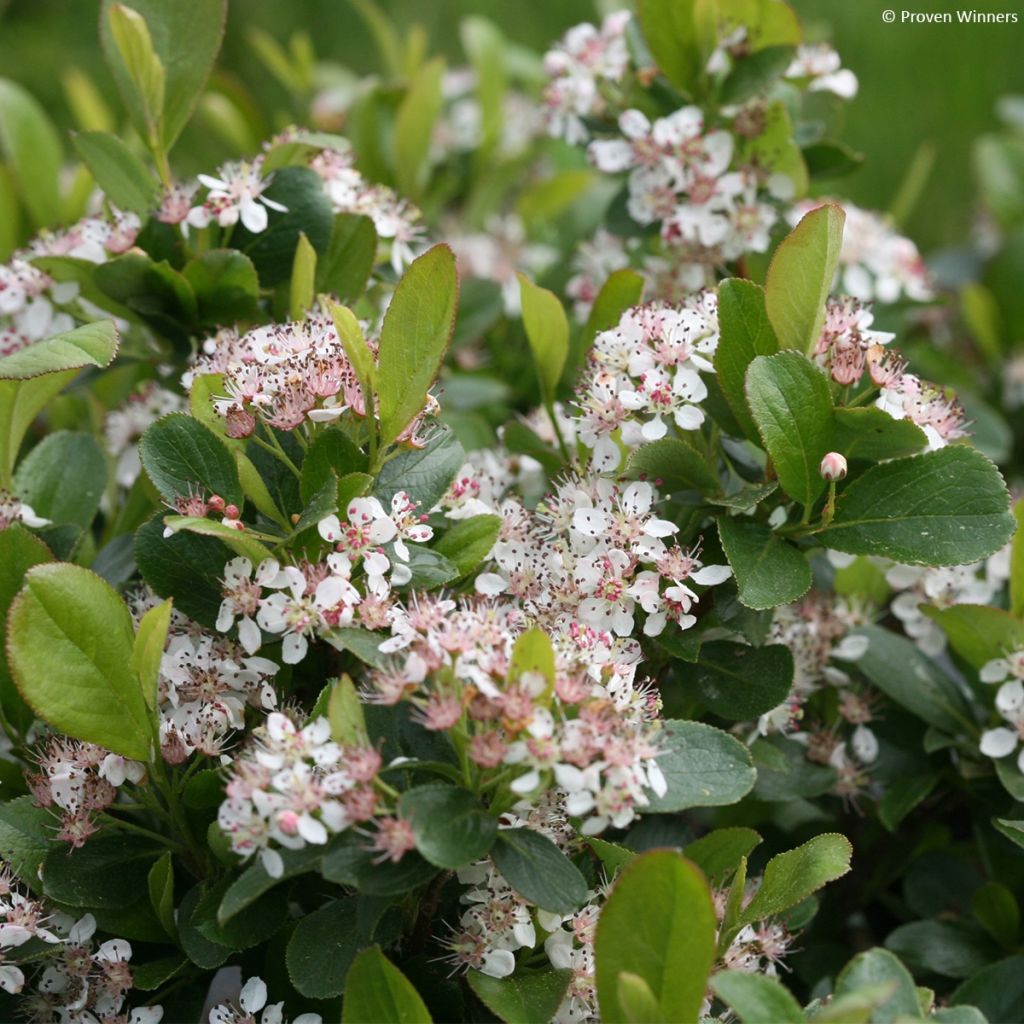

Aronia melanocarpa REVONTULI® MOUND Proven Winners®
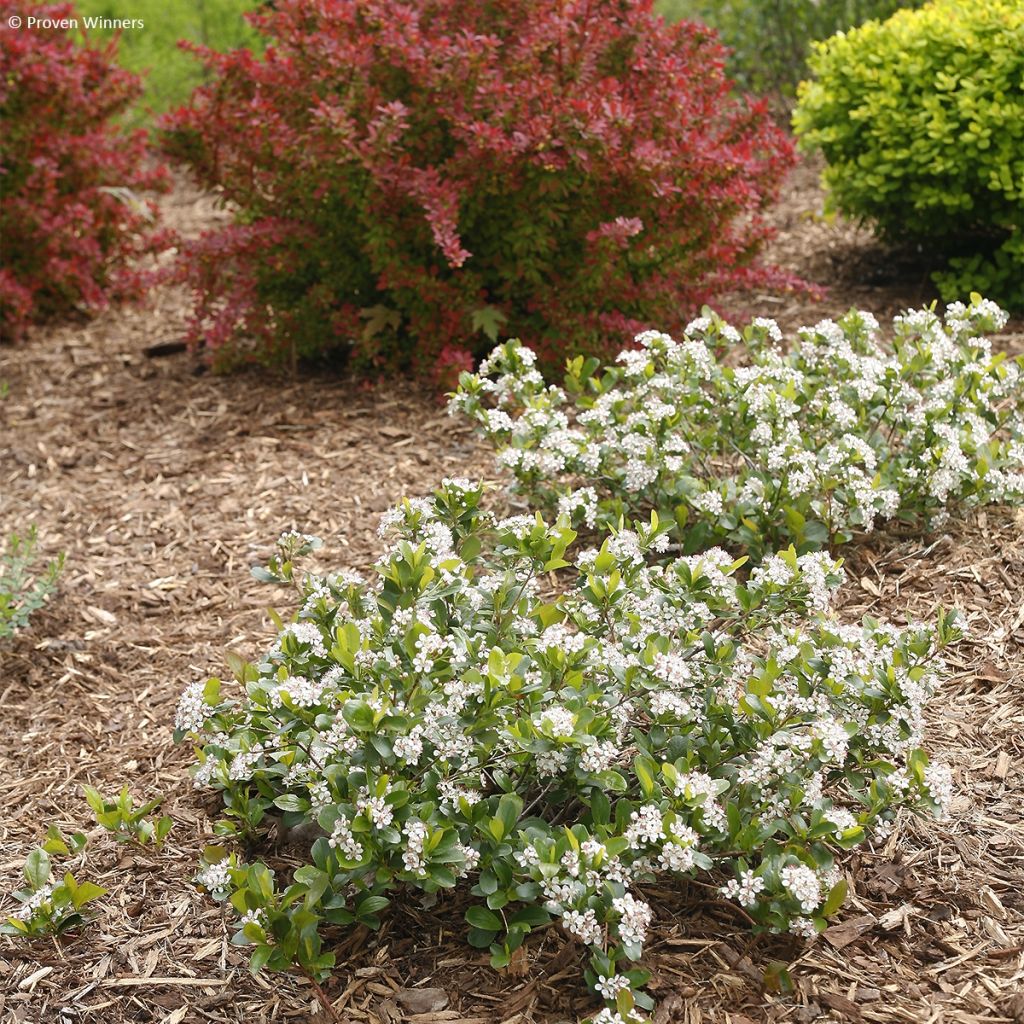

Aronia melanocarpa REVONTULI® MOUND Proven Winners®
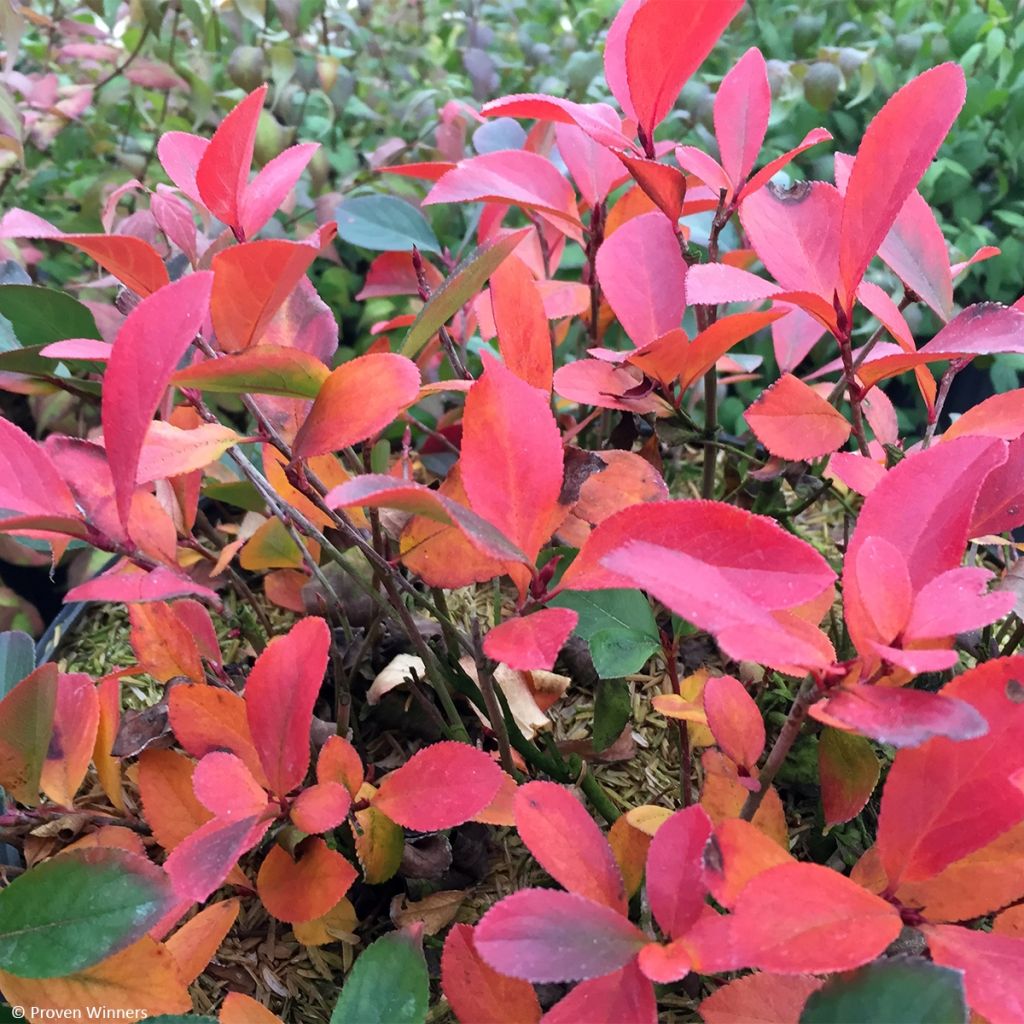

Aronia melanocarpa REVONTULI® MOUND Proven Winners®
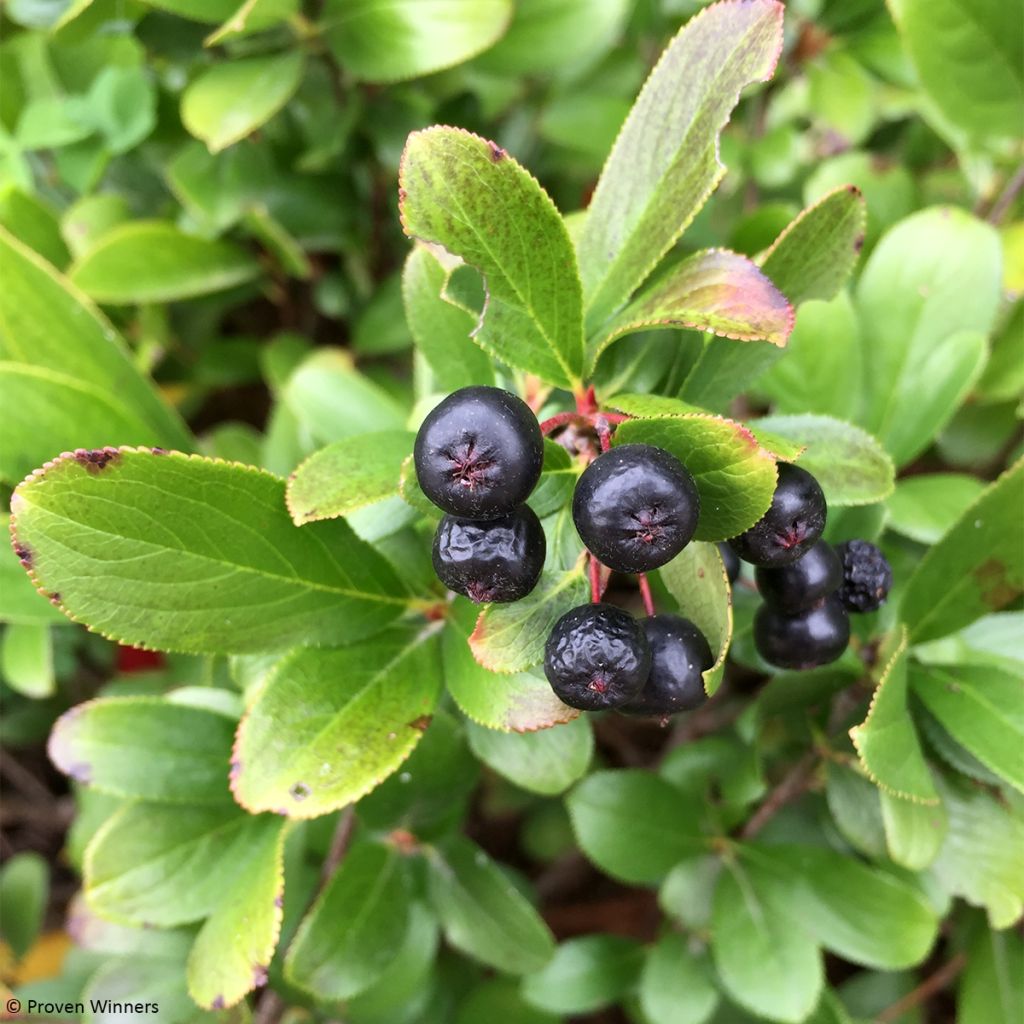

Aronia melanocarpa REVONTULI® MOUND Proven Winners®
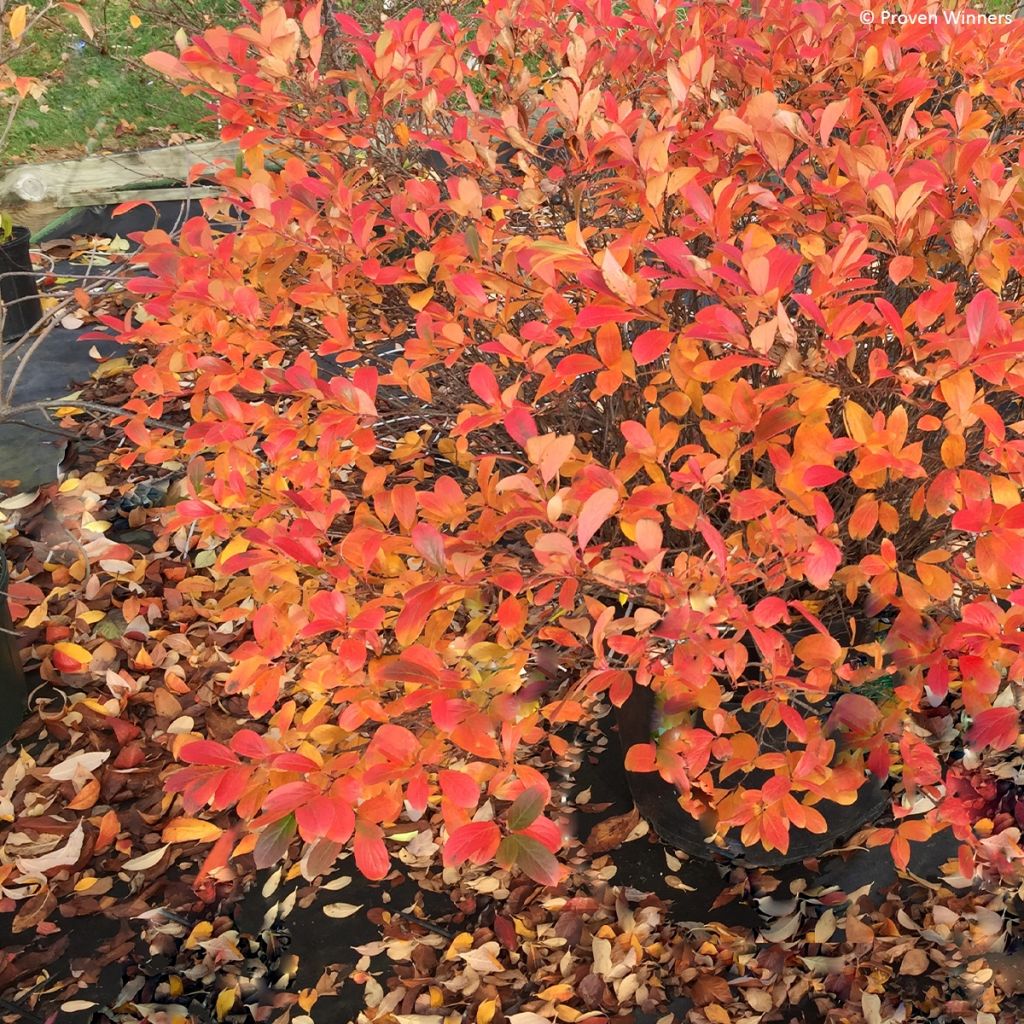

Aronia melanocarpa REVONTULI® MOUND Proven Winners®
Aronia melanocarpa Revontuli Mound
Aronia melanocarpa Revontuli® Mound
Black Chokeberry, Black Berried Aronia
This item cannot be shipped to the selected country
Delivery charge from €5.90
More information
Schedule delivery date,
and select date in basket
This plant carries a 24 months recovery warranty
More information
We guarantee the quality of our plants for a full growing cycle, and will replace at our expense any plant that fails to recover under normal climatic and planting conditions.
From €5.90 for pickup delivery and €6.90 for home delivery
Express home delivery from €8.90.
Does this plant fit my garden?
Set up your Plantfit profile →
Description
The Aronia melanocarpa Revontuli Mound is a particularly compact form of black-fruited Aronia that allows you to enjoy this bush full of advantages even in gardens where space is limited. The plant forms a small mound wider than it is tall, adorned with white, decorative, and honey-bearing spring blooms, then with black and edible berries with a flavour and appearance resembling blackcurrants. It is at the end of the season that one will appreciate the most this Aronia adorned with beautiful autumn colours and loaded with small black berries. Its cultivation presents no difficulty in ordinary soil, in a sunny exposure to accentuate its colours.
Native to Canada and the northeastern United States, the Aronia melanocarpa is a distant cousin of roses, plum trees, and brambles, a member of the vast rose family. 'Revontuli Mound' is a recent horticultural variety obtained in the USA by Proven Winners. Very cold-resistant, this bush, reaches an average height of 50 cm (19.7 in) with a spread of 75 cm (29.5 in). It has a slow growth and has a low, spreading, well-branched habit. Its bark is smooth, reddish-brown. It bears beautiful deciduous foliage. Its alternating leaves are simple, ovate, finely indented, about 4-5 cm (1.6-2 in) long, of a dark green satin colour. They truly blaze in autumn before falling, adopting different shades of orange, copper, crimson red, and violet. In April-May, white flowers with pink stamens appear, measuring 2 cm (0.8 in) in diameter. Gathered in corymbs, they are very numerous, slightly fragrant and honey-bearing. They give way to clusters of round berries of a greeni-purple colour that become black-purple and shiny while their peduncles turn red. This edible fruit with a slightly tart flavour persists quite a long time in winter if not consumed by birds.
Naturally very resistant to diseases and parasites, Aronia melanocarpa Revontuli Mound Proven Winners is a small bush that is both hardy, favourable to biodiversity, compact, and undemanding. It easily fits into shrub and perennial borders, or even in a pot on the terrace. To achieve a mass effect, plant it in groups of 3 to 5 shrubs. This Aronia can be combined with other flowering and fruit-bearing shrubs, for example, with hedge honeysuckles, Goumi du Japon, May berries, raspberries, Goji, and other blueberries.
The Aronia fruits can be consumed fresh, cooked, as jam, or as juice that can be mixed, for example, with cranberry and apple juice.
Report an error about the product description
Aronia melanocarpa Revontuli Mound in pictures




Plant habit
Flowering
Foliage
Botanical data
Aronia
melanocarpa
Revontuli® Mound
Rosaceae
Black Chokeberry, Black Berried Aronia
North America
Other Aronia
Planting and care
The Aronia melanocarpa Revontuli Mound Proven Winners is preferably planted in early spring or early autumn in any well-prepared and loosened garden soil. While it is very tolerant, it prefers deep, moist, not too heavy, and slightly acidic soil. Its root system is quite shallow, so it is advisable to dig a wide planting hole to help it establish more quickly. Plant it in a sunny but not scorching, or a semi-shaded location. In shade and slightly calcareous soil, its colours will be more muted. The hardiness of this Canadian bush is excellent, even in wet soil. Mulch and water well during the first two summers, especially in dry and hot weather. Prune all branches to half their length at the end of winter. It is naturally highly resistant to diseases and parasites.
Planting period
Intended location
Care
This item has not been reviewed yet - be the first to leave a review about it.
Spring-flowering shrubs
Haven't found what you were looking for?
Hardiness is the lowest winter temperature a plant can endure without suffering serious damage or even dying. However, hardiness is affected by location (a sheltered area, such as a patio), protection (winter cover) and soil type (hardiness is improved by well-drained soil).

Photo Sharing Terms & Conditions
In order to encourage gardeners to interact and share their experiences, Promesse de fleurs offers various media enabling content to be uploaded onto its Site - in particular via the ‘Photo sharing’ module.
The User agrees to refrain from:
- Posting any content that is illegal, prejudicial, insulting, racist, inciteful to hatred, revisionist, contrary to public decency, that infringes on privacy or on the privacy rights of third parties, in particular the publicity rights of persons and goods, intellectual property rights, or the right to privacy.
- Submitting content on behalf of a third party;
- Impersonate the identity of a third party and/or publish any personal information about a third party;
In general, the User undertakes to refrain from any unethical behaviour.
All Content (in particular text, comments, files, images, photos, videos, creative works, etc.), which may be subject to property or intellectual property rights, image or other private rights, shall remain the property of the User, subject to the limited rights granted by the terms of the licence granted by Promesse de fleurs as stated below. Users are at liberty to publish or not to publish such Content on the Site, notably via the ‘Photo Sharing’ facility, and accept that this Content shall be made public and freely accessible, notably on the Internet.
Users further acknowledge, undertake to have ,and guarantee that they hold all necessary rights and permissions to publish such material on the Site, in particular with regard to the legislation in force pertaining to any privacy, property, intellectual property, image, or contractual rights, or rights of any other nature. By publishing such Content on the Site, Users acknowledge accepting full liability as publishers of the Content within the meaning of the law, and grant Promesse de fleurs, free of charge, an inclusive, worldwide licence for the said Content for the entire duration of its publication, including all reproduction, representation, up/downloading, displaying, performing, transmission, and storage rights.
Users also grant permission for their name to be linked to the Content and accept that this link may not always be made available.
By engaging in posting material, Users consent to their Content becoming automatically accessible on the Internet, in particular on other sites and/or blogs and/or web pages of the Promesse de fleurs site, including in particular social pages and the Promesse de fleurs catalogue.
Users may secure the removal of entrusted content free of charge by issuing a simple request via our contact form.
The flowering period indicated on our website applies to countries and regions located in USDA zone 8 (France, the United Kingdom, Ireland, the Netherlands, etc.)
It will vary according to where you live:
- In zones 9 to 10 (Italy, Spain, Greece, etc.), flowering will occur about 2 to 4 weeks earlier.
- In zones 6 to 7 (Germany, Poland, Slovenia, and lower mountainous regions), flowering will be delayed by 2 to 3 weeks.
- In zone 5 (Central Europe, Scandinavia), blooming will be delayed by 3 to 5 weeks.
In temperate climates, pruning of spring-flowering shrubs (forsythia, spireas, etc.) should be done just after flowering.
Pruning of summer-flowering shrubs (Indian Lilac, Perovskia, etc.) can be done in winter or spring.
In cold regions as well as with frost-sensitive plants, avoid pruning too early when severe frosts may still occur.
The planting period indicated on our website applies to countries and regions located in USDA zone 8 (France, United Kingdom, Ireland, Netherlands).
It will vary according to where you live:
- In Mediterranean zones (Marseille, Madrid, Milan, etc.), autumn and winter are the best planting periods.
- In continental zones (Strasbourg, Munich, Vienna, etc.), delay planting by 2 to 3 weeks in spring and bring it forward by 2 to 4 weeks in autumn.
- In mountainous regions (the Alps, Pyrenees, Carpathians, etc.), it is best to plant in late spring (May-June) or late summer (August-September).
The harvesting period indicated on our website applies to countries and regions in USDA zone 8 (France, England, Ireland, the Netherlands).
In colder areas (Scandinavia, Poland, Austria...) fruit and vegetable harvests are likely to be delayed by 3-4 weeks.
In warmer areas (Italy, Spain, Greece, etc.), harvesting will probably take place earlier, depending on weather conditions.
The sowing periods indicated on our website apply to countries and regions within USDA Zone 8 (France, UK, Ireland, Netherlands).
In colder areas (Scandinavia, Poland, Austria...), delay any outdoor sowing by 3-4 weeks, or sow under glass.
In warmer climes (Italy, Spain, Greece, etc.), bring outdoor sowing forward by a few weeks.

































